Unveiling the Richness of Cultural Heritage
What Are the Essential Components of Cultural Heritage?
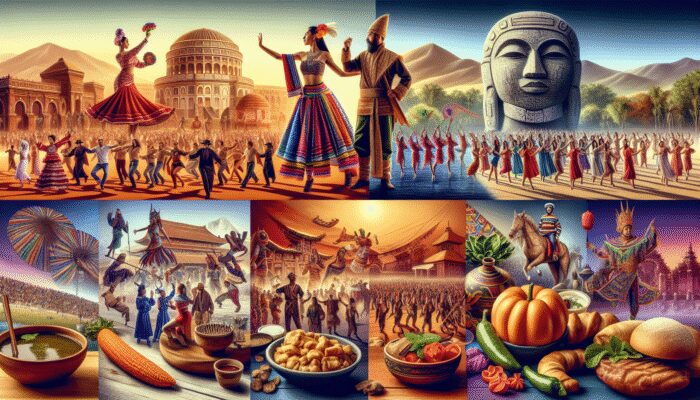
Cultural heritage is a complex and enriching concept that encapsulates the core of a community’s identity, historical narrative, and cherished traditions. It includes a variety of components that are transmitted through generations, enabling societies to preserve their distinctive characteristics and legacies. The essential components of cultural heritage comprise:
- Traditions and Customs: These are the practices and rituals that are handed down through generations, shaping social norms and community values.
- Languages: Indigenous and local languages serve as vessels for cultural narratives, conveying the unique stories and identities of communities.
- Artifacts: Objects of historical significance, including tools, clothing, and art, that embody the experiences of past generations.
- Architectural Styles: Structures that not only reflect the aesthetics of a culture but also its history and development over time.
- Performing Arts: This includes music, dance, and theater that narrate cultural stories and encapsulate the values of a community.
- Festivals: Celebrations that honor cultural, religious, or historical narratives, bringing communities together in shared joy and remembrance.
- Culinary Traditions: Unique food practices and recipes that represent local flavors and showcase the region’s agricultural heritage.
- Folklore and Stories: Tales and legends that convey moral lessons and reflect the cultural values of a community.
Each of these components plays a pivotal role in forming the identity of a community, allowing individuals to connect with their historical roots while enriching their present experiences. Grasping these aspects fosters a deeper appreciation for the complexities of diverse cultures across the globe, leading to a greater understanding of humanity’s shared heritage.
Why Is It Important to Preserve Historical Sites?
Preservation initiatives are crucial for safeguarding the integrity of historical sites, ensuring that future generations can learn from and appreciate these invaluable cultural legacies. Historic preservation involves a multifaceted approach that includes research, restoration, and active community engagement, all of which contribute to maintaining a site’s authenticity. For example, numerous UNESCO World Heritage Sites are meticulously protected to uphold their universal significance, with renowned examples like the Great Wall of China and the Pyramids of Egypt.
Preservation efforts can range from funding initiatives to grassroots movements, all aimed at protecting sites from urban encroachment and environmental degradation. Local communities frequently play a vital role in advocating for preservation, organizing tours and educational programs that highlight the importance of these sites. By engaging travelers through well-organized heritage tours, awareness is raised, and economic support for preservation initiatives is generated, creating a sustainable model for cultural stewardship and conservation.
How Can Travelers Engage with Local Traditions?
Engaging in local traditions provides an authentic experience that deepens the understanding of a culture’s values and customs. Immersing oneself in traditional practices, whether through festivals, ceremonies, or daily routines, allows travelers to forge meaningful connections with local residents. This engagement often leads to invaluable exchanges of knowledge and perspectives that enhance overall cultural appreciation.
For instance, travelers might participate in a traditional dance, take part in a local cooking class, or join a craft workshop, all of which provide insights into the community’s lifestyle and beliefs. Moreover, engaging with local traditions can significantly enrich one’s travel experience, transforming mere sightseeing into a transformative journey. By nurturing these connections, travelers not only create unique memories but also contribute to the preservation and celebration of cultural heritage.
Expert Recommendations for Activities in San Miguel de Allende
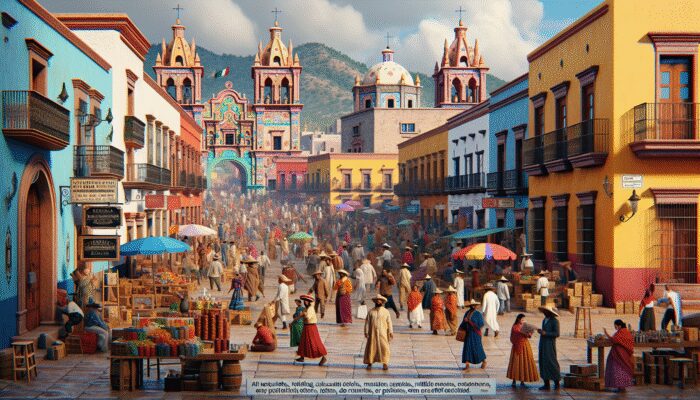
How Can Travelers Maximize Their Experiences with Expert Tips?
Travelers can significantly enhance their experiences by seeking expert advice, which provides tailored insider tips and recommendations that align with their interests. Local guides, travel blogs, and tourism boards often offer invaluable insights that help navigate a destination’s hidden gems while steering clear of common tourist traps. For instance, a knowledgeable local expert might recommend lesser-known galleries in San Miguel de Allende that showcase emerging artists, rather than just the usual tourist spots.
Numerous real-world examples illustrate how expert recommendations led travelers to immersive experiences. Consider a traveler who discovered a secret garden café through a local’s suggestion, providing a peaceful retreat away from the bustling streets. Furthermore, expert advice can encompass crucial logistical information, such as the best times to visit specific sites, cultural etiquette, and even safety tips, greatly enhancing a traveler’s overall journey. By leveraging expert guidance, travelers not only deepen their understanding of a locale but also ensure their adventures are enjoyable and fulfilling.
What Are the Most Popular Experiences in San Miguel de Allende?
Travelers frequently seek unique and memorable experiences that foster a deeper connection to a destination’s rich culture and history. In San Miguel de Allende, experiences such as hot air balloon rides over the stunning landscape, exploring the vibrant local art scene, or participating in traditional fiestas rank high on many travelers’ lists.
Tourists are particularly drawn to immersive activities that enable them to actively participate in local life rather than merely observe it. This includes hands-on workshops where visitors can learn pottery, weaving, or even local cooking techniques. The chance to engage directly with artisans and locals fosters a richer understanding of cultural practices. Additionally, experiences like guided historical tours through the city’s colonial architecture or participating in a local festival allow travelers to appreciate the intricacies of the culture while creating lasting memories.
What Are Effective Strategies for Immersive Travel?
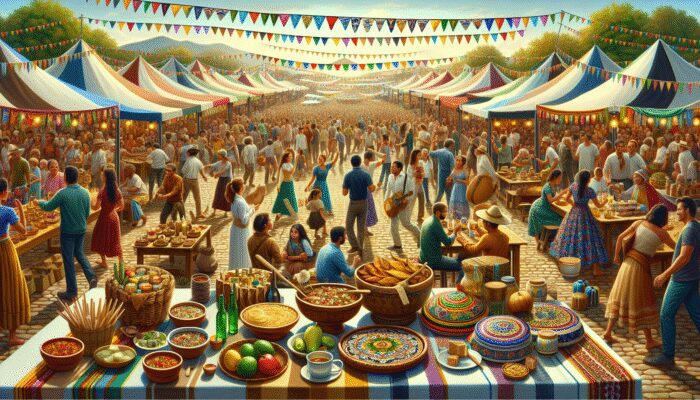
Immersive travel entails engaging with the local culture in meaningful ways, thereby enriching the overall travel experience. One effective strategy is participating in community events, which often provide an authentic glimpse into the daily lives of locals. For instance, travelers might discover community markets or local festivals where they can interact with residents, sample traditional foods, and witness local craftsmanship.
Another effective strategy involves learning a local craft or skill, such as taking a painting class or attending a dance workshop. This not only cultivates a deeper connection to the culture but also supports local artisans and instructors. Furthermore, staying in locally-owned accommodations rather than international hotel chains can significantly enhance immersion. Engaging with hosts, enjoying home-cooked meals, and receiving personalized recommendations create a more authentic experience that aligns with the rhythms of local life.
Indulging in Culinary Delights
What Local Dishes Should Travelers Sample?
Sampling local cuisine provides essential insight into a region’s culinary traditions and ingredients, revealing profound connections to its culture and history. In San Miguel de Allende, the culinary scene is rich and diverse, offering an array of flavors that reflect its vibrant heritage. Some must-try dishes include:
- Enchiladas: Corn tortillas filled with a variety of ingredients and topped with savory chili sauce.
- Chiles en Nogada: This traditional dish features poblano peppers stuffed with meat and nuts, smothered in a rich walnut sauce and garnished with pomegranate seeds.
- Tamales: Steamed corn dough filled with meats, cheeses, or fruits, wrapped in corn husks for a delightful treat.
- Mole: A rich, complex sauce often served with chicken or turkey, known for its unique blend of spices and chocolate.
- Street Tacos: Quick, flavorful bites commonly garnished with fresh cilantro, onions, and a variety of salsas.
- Agua Frescas: Refreshing beverages made from fruits, cereals, and flowers, perfect for quenching thirst on warm days.
- Flan: A beloved Mexican dessert, this creamy custard is a staple at celebrations and gatherings.
- Tequila: A must-try spirit deeply rooted in Mexican culture, often enjoyed straight or in various cocktails.
Sampling these dishes not only tantalizes the taste buds but also narrates the story of the region’s agricultural practices and cultural influences. Dining at local eateries or participating in food tours can provide deeper insights into the culinary landscape and enhance the overall gastronomic experience.
What Advantages Do Culinary Tours Offer?
Culinary tours provide guided explorations of a destination’s food scene, often including visits to bustling markets, engaging cooking classes, and dining experiences at local restaurants. One of the primary benefits of culinary tours is the opportunity to learn about the cultural significance of various dishes from knowledgeable locals.
These tours frequently offer unique insights into the history of the cuisine, including how local ingredients shape culinary practices and traditions. For example, a culinary tour might guide travelers through vibrant markets where they can observe fresh produce and traditional foods, enhancing their understanding of local cooking techniques and dietary habits. Moreover, culinary tours foster a sense of community by bringing together individuals with shared interests in food and culture, facilitating connections and conversations that can lead to lasting friendships.
Additionally, participants often leave with newfound skills and recipes, empowering them to recreate the flavors at home, thus extending the cultural exchange beyond their travel experience.
Why Are Cooking Classes and Workshops Valuable?
Participating in cooking classes allows travelers to acquire traditional recipes and cooking techniques from local chefs, providing a hands-on cultural experience that is both educational and enjoyable. These classes often emphasize the use of local ingredients and traditional methods, enhancing the understanding of a region’s culinary heritage.
For instance, in San Miguel de Allende, aspiring chefs can learn how to prepare classic dishes like tamales or mole under the guidance of experienced local cooks. These sessions not only impart valuable cooking skills but also delve into the cultural context of the dishes, exploring their historical significance and regional variations.
Many classes include market visits, allowing participants to select fresh ingredients, further enriching the experience by connecting them with local producers. This not only supports the local economy but also fosters a deeper appreciation for the food they prepare. Engaging in these culinary endeavors enables travelers to carry a piece of the culture home, creating lasting memories and skills they can share with friends and family.
Experiencing Festivals and Community Events
What Makes Festivals Exceptional Cultural Experiences?
Festivals provide concentrated displays of a culture’s arts, music, and traditions, often attracting visitors from around the globe. They create vibrant atmospheres where locals and tourists unite to celebrate shared histories and values. In San Miguel de Allende, festivals like the Día de los Muertos (Day of the Dead) and the Festival de Cine exemplify the city’s rich cultural tapestry.
What sets these festivals apart is their ability to immerse attendees in local customs through music, dance, food, and art. Visitors can witness elaborate parades, taste traditional dishes, and engage in workshops that deepen their understanding of the cultural significance behind each celebration. Furthermore, festivals often reflect the community’s spirit and resilience, creating an inclusive environment that invites participation from all.
Engaging with these events enables travelers to forge deep connections with locals and gain insights into their way of life. These experiences frequently result in cherished memories and a profound appreciation for cultural diversity.
Why Are Annual Celebrations Significant?
Annual celebrations mark important cultural or historical events, fostering a sense of community and continuity. In San Miguel de Allende, traditional celebrations such as the Festival of San Miguel Arcángel and the Fiestas de la Casa de la Cultura showcase the city’s rich heritage and unique customs.
These festivals typically have deep-rooted historical significance, commemorating events that have shaped the local culture. They provide a platform for showcasing traditional music, dance, and art, reinforcing communal bonds among residents. Locals often prepare for these celebrations months in advance, crafting elaborate costumes and decorations that exhibit their artistic talents and cultural pride.
By participating in these annual celebrations, travelers can experience firsthand the dedication and passion that go into preserving cultural traditions. Such events also promote social interaction, where visitors and locals engage in shared rituals, creating a tapestry of cultural exchange that enriches the travel experience.
How Can Travelers Actively Participate in Local Events?
Travelers can actively engage with local events by attending public celebrations, participating in workshops, or volunteering at community festivals. Keeping an eye on local calendars or seeking guidance from tourism boards can help identify upcoming events, allowing travelers to plan their visits around these unique experiences.
Participating in workshops, such as crafting, cooking, or traditional dance, offers an immersive way to learn about local practices. This not only enhances cultural understanding but also fosters connections with locals who share their skills and stories. Volunteering during festivals, such as assisting in organization or participating in preparations, provides a behind-the-scenes perspective while actively contributing to the community.
Engagement with local events transforms a passive travel experience into an active one, fostering authentic interactions and a deeper appreciation for the richness of local culture. This approach makes travel more meaningful and leaves lasting impressions on both travelers and hosts alike.
What Are the Benefits of Participating in Festivals?
Participating in festivals enhances cultural understanding, promotes social bonds, and provides memorable experiences that contribute to personal growth. Festivals create opportunities for immersive cultural experiences that often lead to increased empathy and appreciation for diverse traditions.
Engaging in festivals allows travelers to witness firsthand the passion and creativity that go into cultural expressions, from vibrant parades to traditional performances. This engagement fosters connections, both with locals and fellow travelers, creating a sense of community and shared experience.
Moreover, participating in festivals can facilitate personal growth by encouraging openness to new ideas and perspectives. Travelers often find themselves challenged to step outside their comfort zones, whether trying unfamiliar foods or dancing to traditional music. Such experiences can lead to transformative moments, broadening horizons and enhancing personal development.
How Can Travelers Effectively Plan Their Festival Experience?
Effective planning involves researching festival dates, understanding local customs, and preparing for participation, ensuring a fulfilling and respectful engagement with each event. Travelers should begin by identifying the festivals that intrigue them, noting specific dates and locations, and checking for any necessary tickets or reservations.
Understanding local customs is equally essential, as it helps ensure respectful participation. For example, certain festivals may require specific attire or customs that honor cultural traditions. Additionally, being aware of the event’s significance can enhance appreciation and understanding, allowing travelers to engage more meaningfully.
Preparation may also involve learning a few key phrases in the local language, which greatly aids in fostering goodwill and connection. Ultimately, thoughtful planning allows travelers to immerse themselves fully in the festival experience, creating lasting memories and enriching their understanding of the local culture.
Research-Backed Benefits of Activities in San Miguel de Allende
How Does Cultural Engagement Contribute to Well-Being?
Engaging with different cultures broadens perspectives and increases empathy, contributing to personal growth and overall well-being. Numerous studies highlight the positive psychological impacts of cultural engagement, which include heightened happiness and a sense of belonging. Actionable steps for cultural engagement can involve participating in cultural exchange programs, attending local events, or simply conversing with locals during travels.
For instance, engaging in art or music workshops can foster both creativity and connections, providing a therapeutic outlet for self-expression. Furthermore, travel often encourages individuals to step outside their comfort zones, leading to greater adaptability and resilience. By embracing cultural experiences, travelers typically find themselves enriched both intellectually and emotionally, culminating in a more fulfilling life experience.
What Is the Impact of Travel on Personal Development?
Travel can significantly enhance self-awareness and adaptability, fostering personal growth and development. The challenges encountered while navigating new environments—such as language barriers, unfamiliar customs, or logistical navigation—encourage problem-solving and resilience.
For instance, a traveler who embarks on an adventure, such as hiking in remote areas or exploring bustling markets, often learns to adapt and thrive in diverse situations. Such experiences not only build confidence but also encourage self-reflection, leading to a deeper understanding of one’s values and beliefs.
Moreover, travel frequently exposes individuals to different ways of living and thinking, promoting open-mindedness and encouraging a broader worldview. This exposure can lead to lasting changes in behavior and perceptions, ultimately enhancing personal and professional relationships.
How Do Studies Highlight the Educational Value of Travel?
Research indicates that travel can enhance learning and understanding of diverse cultures and histories. Immersive travel experiences, such as visiting historical sites, participating in local customs, or interacting with indigenous communities, facilitate experiential learning that cannot be replicated in traditional classroom settings.
Educational travel promotes critical thinking by exposing individuals to diverse perspectives and encouraging them to question their assumptions. For example, a visit to a cultural heritage site often provides firsthand insights into historical events and societal changes, deepening understanding far beyond what books can convey.
Additionally, travel fosters language acquisition and practical skills that contribute to personal and professional development. Engaging with locals in their language not only enhances communication but also builds rapport and mutual respect, fostering a deeper connection to the culture.
Shopping for Unique Souvenirs
What Are the Most Popular Souvenirs to Consider?
Popular souvenirs often encompass local crafts, artwork, and food products that reflect a destination’s culture and traditions. In San Miguel de Allende, visitors can discover a rich array of unique items to bring home, offering tangible connections to their travel experiences. Some sought-after souvenirs include:
- Handcrafted Pottery: Beautiful and often intricately designed pieces that showcase local artisan skills.
- Textiles: Unique fabrics, including handwoven shawls and embroidered items that display local patterns and craftsmanship.
- Jewelry: Stunning pieces created by local artisans, often incorporating indigenous materials and designs.
- Paintings and Artwork: Local art that captures the essence of the region, from vibrant landscapes to cultural portraits.
- Sugar Skulls: Traditional decorations for Día de los Muertos that are colorful and carry significant meaning.
- Local Spices and Sauces: Culinary souvenirs that allow travelers to recreate authentic flavors at home.
- Leather Goods: Handcrafted items such as bags, wallets, and belts made from locally sourced materials.
- Traditional Musical Instruments: Unique instruments like guitars or maracas that reflect the local music culture.
Shopping for these items not only provides memorable keepsakes but also supports local artisans and the economy, ensuring that the cultural heritage is preserved and celebrated for years to come.
How Can Travelers Find Unique Local Crafts?
Seeking out unique local crafts supports artisans and provides travelers with authentic mementos of their journey. Engaging with local markets, artisan workshops, and boutiques can lead to discovering one-of-a-kind items that showcase the area’s creativity and cultural influences.
In San Miguel de Allende, the local markets are treasure troves filled with handcrafted products, from vibrant textiles to intricate pottery. Visiting studios where artisans work allows travelers to witness the creative process firsthand, making the acquisition of these items even more meaningful.
Moreover, purchasing directly from artisans fosters sustainable practices, ensuring that more of the proceeds benefit the creators. By valuing authenticity over mass-produced goods, travelers contribute to the preservation of traditional crafts and promote cultural exchange, creating a lasting impact on the artistic community.
What Are the Highlights of Local Markets and Shopping Districts?
Markets and shopping districts offer a wide variety of goods, from everyday items to specialty products, often at competitive prices. In San Miguel de Allende, the vibrant market scene plays a crucial role in the local economy and cultural life.
Visiting the Mercado de Artesanías provides an immersive experience where travelers can explore countless stalls filled with handmade crafts, textiles, and culinary delights. Each market visit is an opportunity to engage with local vendors, learn about their crafts, and appreciate the stories behind their products.
Additionally, shopping districts like the historic center are filled with boutiques and galleries showcasing the work of local artists, offering a mix of contemporary and traditional items. This diversity allows travelers to find unique souvenirs while experiencing the local culture and supporting the artistic community.
What Tips Can Enhance Bargaining and Negotiating Prices?
Understanding local bargaining customs can lead to better deals on souvenirs, enhancing the shopping experience and saving money. While not all markets require haggling, being aware of local etiquette can significantly improve the interaction.
In many cases, bargaining is perceived as a friendly exchange rather than a tense negotiation. Starting with a friendly greeting can create a positive atmosphere. Offering a price below the asking price is common practice, but this should be done respectfully and with an openness to counteroffers.
It is also important to observe how locals engage in bargaining; this can provide insights into acceptable practices. Knowing the approximate value of items can help travelers gauge fair prices. Overall, approaching bargaining with an open mind and a sense of humor can make the process enjoyable and lead to rewarding interactions.
Outdoor Activities and Nature Exploration
What Are the Best Ways to Connect with Nature?
Connecting with nature can involve various activities such as hiking, birdwatching, or simply enjoying serene natural settings. In San Miguel de Allende, the surrounding landscapes offer a plethora of options for outdoor enthusiasts. Some of the best ways to engage with nature include:
- Hiking Trails: Explore scenic paths that wind through hills and valleys, offering breathtaking views and natural beauty.
- Birdwatching: Discover diverse species of birds in their natural habitats, making it ideal for nature lovers and photographers.
- Nature Walks: Stroll through local parks and botanical gardens, appreciating the unique flora and fauna of the region.
- Photography: Capture stunning landscapes and wildlife that characterize the area, perfect for both amateur and professional photographers.
- Horseback Riding: Experience nature from a unique perspective while riding along picturesque trails.
- Stargazing: Enjoy the clear night skies for astronomical observations, especially in less populated regions.
- Picnicking: Spend leisurely afternoons in beautiful parks, enjoying local cuisine surrounded by the tranquility of nature.
- Visiting Natural Reserves: Explore protected areas that showcase the region’s biodiversity and ecological significance.
Each of these activities not only promotes physical health but also fosters a deeper appreciation for the natural beauty surrounding San Miguel de Allende, making it an enriching experience for visitors.
What Adventure Sports Can Travelers Enjoy?
Adventure sports provide an exhilarating way to explore a destination’s natural landscapes while challenging personal limits. In and around San Miguel de Allende, various adventure activities cater to thrill-seekers and nature lovers alike.
For instance, visitors can enjoy activities such as zip-lining through lush canopies, kayaking in nearby lakes, or rock climbing in scenic areas. These experiences often come with guided tours that ensure safety while providing insights into the local ecology and geography.
Additionally, adventure sports foster teamwork and camaraderie, making them ideal for groups or families. Whether scaling cliffs or navigating rapids, the adrenaline rush and sense of accomplishment create memorable experiences that promote personal growth and resilience.
How Does Eco-Tourism Promote Sustainable Practices?
Eco-tourism focuses on responsible travel to natural areas, minimizing environmental impact while promoting conservation efforts. This growing sector emphasizes the importance of preserving natural habitats while ensuring that local communities benefit economically from tourism.
In San Miguel de Allende, eco-friendly tours and activities are increasingly available, engaging travelers in responsible practices such as wildlife conservation and sustainable agriculture. Participating in eco-tours allows visitors to learn about local ecosystems, conservation initiatives, and sustainable farming methods.
Travelers can directly contribute to environmental preservation by choosing eco-friendly accommodations and supporting local businesses that prioritize sustainable practices. This approach not only enhances the travel experience but also ensures the region’s natural beauty is protected for future generations.
What Opportunities Exist in National Parks and Protected Areas?
Visiting national parks provides opportunities to explore diverse ecosystems, engage in educational programs, and support ongoing conservation efforts. In the vicinity of San Miguel de Allende, several protected areas offer stunning landscapes and educational experiences for visitors.
National parks often feature guided tours and educational programs that highlight the region’s ecological diversity, including its unique flora, fauna, and geological formations. Engaging with park rangers and participating in workshops can deepen understanding of the importance of conservation.
Moreover, exploring national parks allows visitors to reconnect with nature while enjoying recreational activities such as hiking, camping, and wildlife watching. Supporting these protected areas through entrance fees and donations helps ensure their preservation, contributing to broader conservation efforts that benefit both the environment and local communities.
Art and Architectural Wonders
How Can Travelers Explore Various Architectural Styles?
Architectural styles reflect a destination’s history and cultural influences, offering a visual journey through time. In San Miguel de Allende, the architecture showcases a blend of colonial Spanish influences and indigenous aesthetics, resulting in a unique urban landscape.
Visitors can marvel at the iconic Parroquia de San Miguel Arcángel, with its stunning neo-Gothic façades and intricate details. Exploring historical neighborhoods reveals a vibrant tapestry of colors, ornate balconies, and cobblestone streets that narrate the story of the city’s rich heritage.
Additionally, architectural walking tours often provide insights into the significance of various styles and structures, enriching the understanding of the city’s development. Engaging with local historians or architects can offer a deeper appreciation of the aesthetic and cultural values embedded in the architecture, fostering a profound connection to the place.
What Can Travelers Discover in Art Galleries and Museums?
Art galleries and museums serve as showcases for a destination’s artistic heritage, providing insights into its cultural and historical context. In San Miguel de Allende, numerous galleries and institutions celebrate local and international artists, making it a thriving hub for artistic expression.
Visitors can explore spaces like the Instituto Allende, where contemporary art meets traditional techniques, offering classes and exhibitions that highlight local talent. The city’s many galleries exhibit a wide range of artworks, from paintings to sculptures, often reflecting the region’s cultural narratives and influences.
Museums dedicated to local history and culture, such as the Museo Historico de San Miguel de Allende, provide opportunities to learn about the city’s past and its artistic evolution. Engaging with the art scene fosters a deeper understanding of the cultural fabric of San Miguel, enhancing the travel experience while supporting local artists.
How Can Travelers Appreciate and Support Local Art?
Travelers can appreciate local art by attending exhibitions, participating in workshops, or purchasing pieces from local artists. Engaging with the local art scene allows for a deeper connection to the culture and its creative expressions.
Visiting galleries during opening receptions or art walks provides opportunities to meet the artists and hear their stories, enriching the viewing experience. Workshops, such as painting or pottery classes, allow travelers to learn techniques directly from local artisans, gaining insights into their creative processes.
Purchasing artwork or crafts from local artists not only supports the community but also creates lasting memories through tangible reminders of the journey. By valuing and engaging with local art, travelers contribute to cultural preservation and the continued vibrancy of the artistic community.
Fostering Relaxation and Wellness
What Services Do Spa and Wellness Retreats Offer?
Spa and wellness retreats provide a wide range of treatments and activities designed to promote relaxation and overall health. In San Miguel de Allende, numerous wellness centers and spas offer holistic approaches to rejuvenation, blending traditional practices with modern techniques.
Visitors can indulge in treatments such as massage therapy, facials, and hydrotherapy, often incorporating local ingredients like herbs and minerals known for their therapeutic properties. Many spas also offer yoga classes, meditation sessions, and wellness workshops that foster mental and physical well-being.
These retreats create serene environments that allow travelers to unwind and reconnect with themselves, making them ideal for those seeking respite from the hustle and bustle of daily life. Engaging in wellness practices not only enhances relaxation but also contributes to holistic health, promoting a balanced lifestyle.
How Does Wellness Travel Benefit Individuals?
Wellness travel can greatly improve physical health, reduce stress, and enhance overall well-being. By immersing themselves in restorative practices and tranquil environments, travelers can foster a greater sense of balance and mindfulness.
Engaging in activities such as yoga, meditation, or nature walks during travel promotes mental clarity and emotional stability. Research indicates that being in peaceful settings can significantly decrease stress levels, leading to improved mood and overall health.
Moreover, wellness travel encourages individuals to prioritize self-care, helping them return home with renewed energy and perspective. By investing in one’s health during travels, individuals can create lasting habits that contribute to sustained well-being long after their journey has concluded.
What Yoga and Meditation Practices Are Available?
Yoga and meditation offer opportunities for relaxation and self-reflection, often set against serene and tranquil backdrops. In San Miguel de Allende, numerous studios and retreats provide classes that cater to all levels, making these practices accessible for everyone.
Practicing yoga in beautiful outdoor settings allows travelers to connect with nature while enhancing physical flexibility and mental clarity. Meditation sessions frequently incorporate local traditions and mindfulness techniques, facilitating deep self-reflection and relaxation.
Engaging in these wellness practices not only enriches the travel experience but also fosters personal growth and emotional resilience. By prioritizing wellness during their journeys, travelers can cultivate a profound sense of peace and well-being that resonates long after their travels conclude.
Frequently Asked Questions
What is the optimal time to visit San Miguel de Allende?
The ideal time to visit is from October to April when the weather is mild and perfect for outdoor activities and vibrant festivals.
Are there must-try local dishes in San Miguel de Allende?
Absolutely, don’t miss out on enchiladas, mole, and chiles en nogada, each showcasing unique regional flavors that define the local culinary landscape.
What are some of the most popular local festivals?
Key festivals include Día de los Muertos, the Festival de Cine, and the Festival of San Miguel Arcángel, each offering rich and immersive cultural experiences.
How can I engage with local artisans?
Visit artisan markets, join hands-on workshops, and attend art exhibitions to connect with local craftsmen and gain insights into their creative processes.
Are there outdoor activities available in San Miguel de Allende?
Yes, outdoor enthusiasts can enjoy hiking, horseback riding, birdwatching, and exploring the stunning nearby landscapes.
What unique souvenirs can I find?
Look for handcrafted pottery, textiles, local art, and traditional musical instruments for authentic keepsakes from your journey.
How can I participate in local cooking classes?
Check local listings or tourism boards for classes offered by local chefs, which are often available at markets or culinary schools.
Are wellness retreats offered in the area?
Yes, San Miguel de Allende boasts numerous wellness retreats featuring spa treatments, yoga classes, and holistic health programs.
What makes San Miguel de Allende’s architecture remarkable?
The city showcases a blend of colonial Spanish influences and indigenous designs, resulting in a visually stunning urban landscape that tells its historical story.
Can I find eco-tourism options in San Miguel de Allende?
Absolutely, many local operators offer eco-tours focused on sustainable practices and conservation efforts that benefit both the environment and the community.
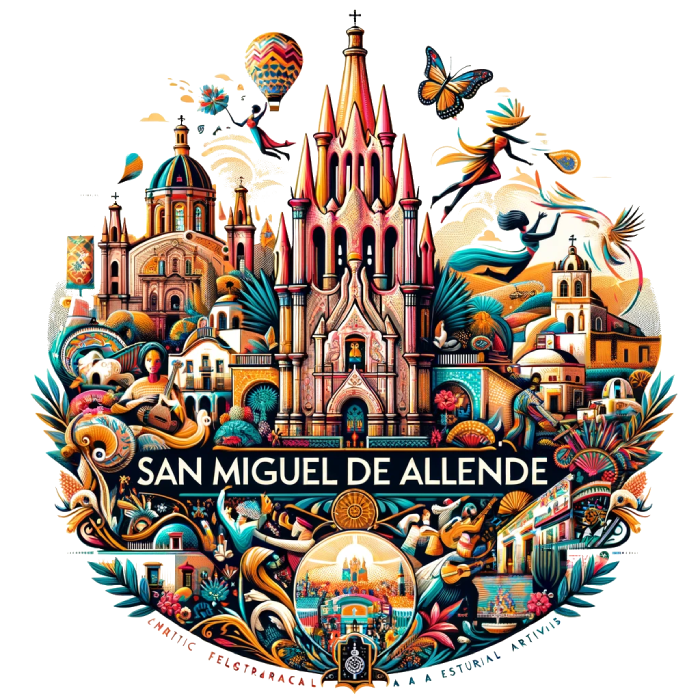

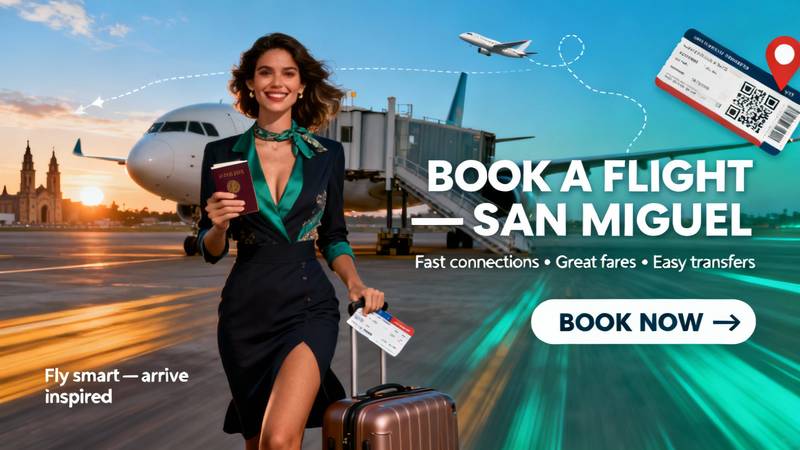
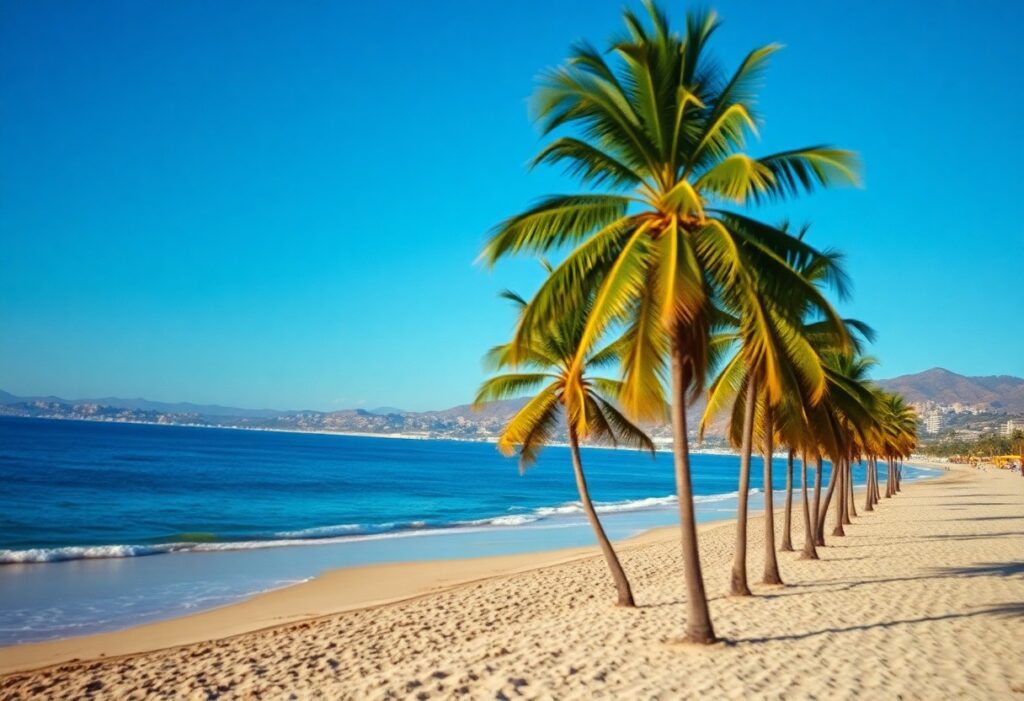
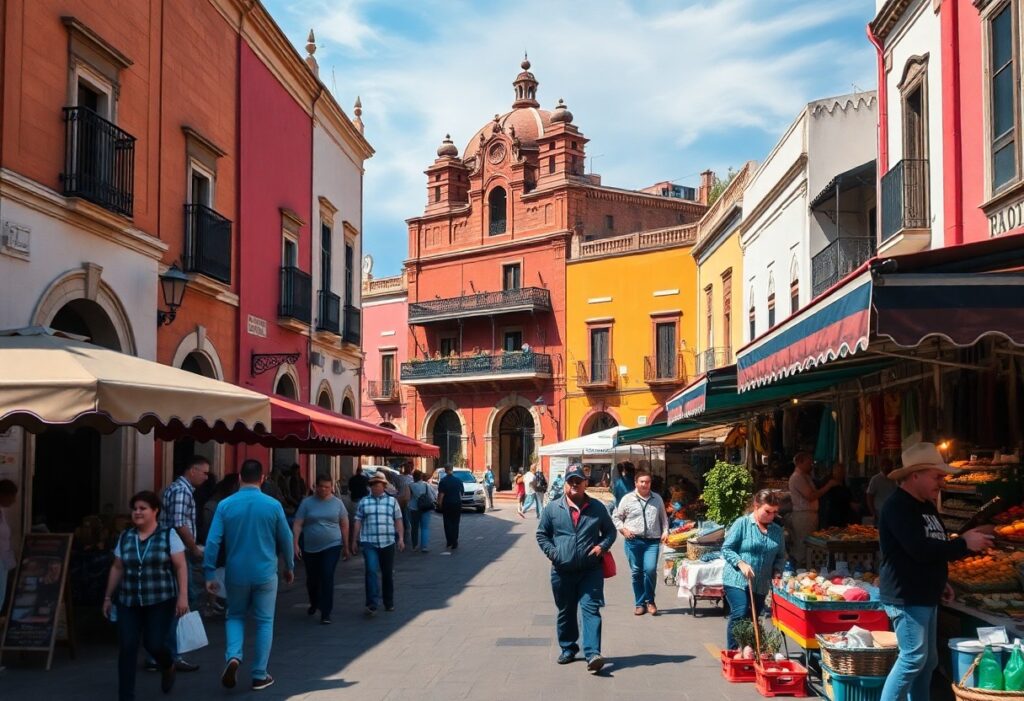
I really appreciate the depth of your exploration into the cultural heritage of San Miguel de Allende. It’s fascinating how traditions and customs shape not just individual identities, but also the community as a whole. The way these rituals create bonds among people is something I’ve noticed during my visits to various cultural festivals around the world.
It’s great to hear your thoughts on the connection between traditions and community. In San Miguel de Allende, you really see how these rituals not only reflect individual identities but also foster a shared sense of belonging. When people come together for events like the Parroquia’s feast day or the Day of the Dead celebrations, it’s like a living tapestry of history and culture unfolding right in front of you.
“Thank you for your thoughtful comment! If you’re interested in further exploring the rich cultural tapestry of San Miguel de Allende and its vibrant festivals, check out this link for more insights.”
https://fallinginlovewithsanmiguel.com/book-hotel
Your exploration of cultural heritage in San Miguel de Allende resonates deeply with me, especially as I reflect on how interconnected traditions and languages are in shaping a community’s identity. The vibrancy of local festivals in the region truly illustrates this, as they not only celebrate historical events but also reinforce social bonds and collective memory. I remember attending a traditional festival in San Miguel where the streets were alive with music, dance, and culinary delights—a beautiful reminder of how culture thrives in shared experiences.